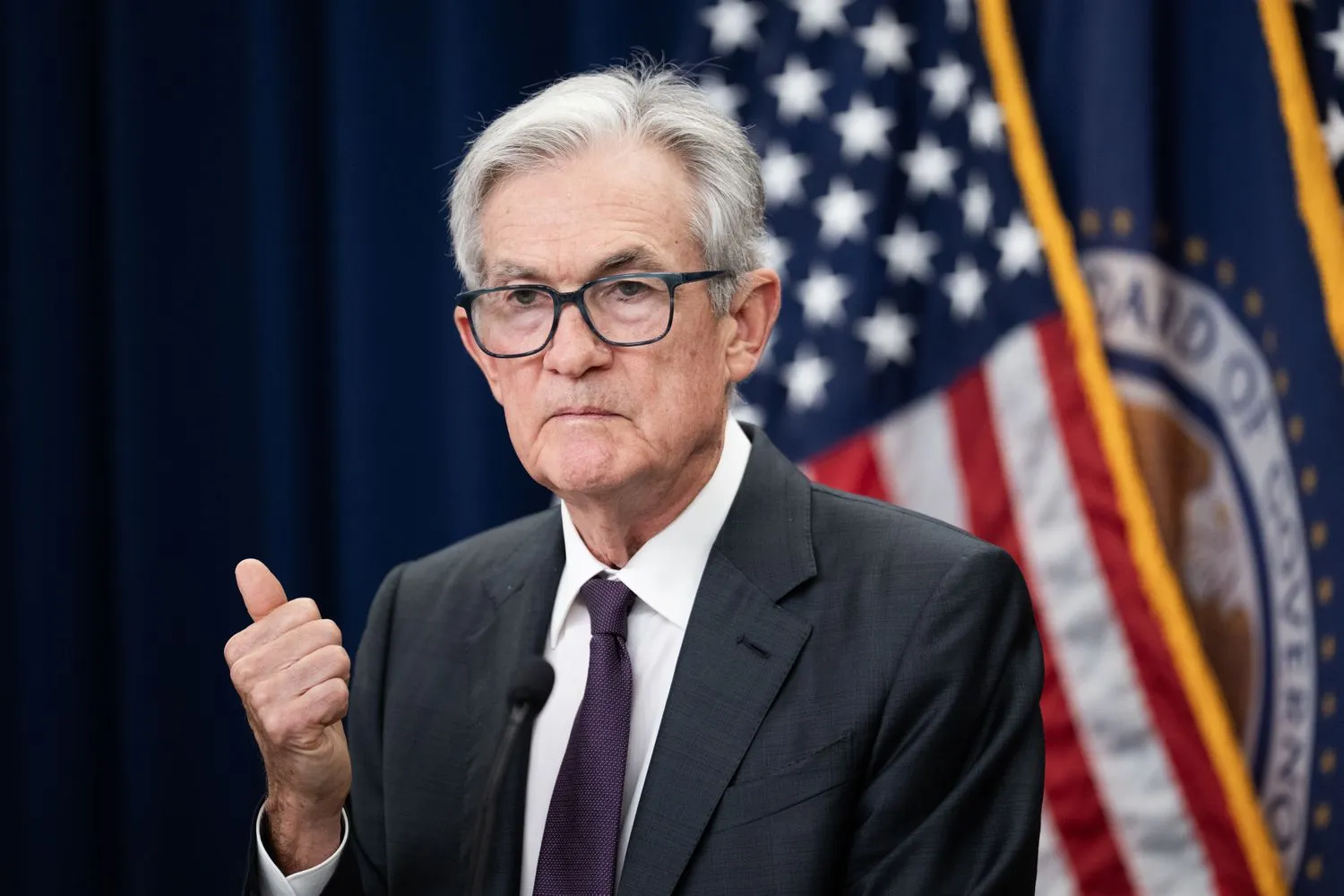Inflation has accelerated across the eurozone’s largest economies this month, suggesting that overall price growth also ticked upward throughout the 20-nation currency bloc, thereby easing pressure on the European Central Bank (ECB) to implement further reductions in borrowing costs as policymakers navigate increasingly complex economic signals.
The ECB reduced its key interest rate by a cumulative 2 percentage points over the year leading up to June, but has maintained rates at their current level ever since as inflation settled closer to its 2% target. Investors are progressively adjusting their expectations, slowly pricing out the possibility of additional rate cuts, though some modest policy easing still remains within the realm of possibility depending on how economic data evolves in coming months.
Build the future you deserve. Get started with our top-tier Online courses: ACCA, HESI A2, ATI TEAS 7, HESI EXIT, NCLEX-RN, NCLEX-PN, and Financial Literacy. Let Serrari Ed guide your path to success. Enroll today.
Major Economies Show Synchronized Inflation Uptick
Inflation accelerated simultaneously in Germany, France, Italy, and Spain—the four largest economies in the eurozone—reinforcing investor expectations that the aggregate figure for the entire currency bloc, scheduled for release Wednesday, will register around 2.2% or 2.3%, notably above August’s reading of 2.0%.
The synchronized increase across Europe’s economic powerhouses represents a significant development for monetary policymakers who have been carefully monitoring inflation trends as they assess the appropriate stance for monetary policy. The uptick, while modest, suggests that the disinflationary process may be encountering some temporary obstacles.
In Germany, Europe’s largest economy and traditional manufacturing powerhouse, inflation based on harmonized standards accelerated to 2.4% from 2.1%, exceeding analyst expectations of 2.2%. The German figure is particularly significant given the country’s economic weight within the eurozone and its historical influence on ECB policy deliberations.
France, the eurozone’s second-largest economy, saw inflation rise to 1.1% from 0.8%, reflecting renewed price pressures even as the country grapples with significant fiscal challenges and political uncertainty following recent governmental changes.
Spain’s inflation rate climbed to 3.0% from 2.7%, the highest among major eurozone economies, partly reflecting the country’s strong tourism sector and robust domestic demand that has characterized its post-pandemic recovery.
Meanwhile, Italy recorded an increase to 1.8% from 1.6%, a moderate uptick that nonetheless contributes to the broader trend across the currency union.
Energy Prices: The Primary Driver Behind Inflation Dynamics
Most of the observed increase in inflation rates stems from a smaller-than-anticipated decline in energy costs compared to August, rather than from broad-based price pressures across the economy. Energy prices, which had been falling sharply throughout much of the year as oil and natural gas markets stabilized following the disruptions caused by geopolitical tensions, are now decreasing at a more moderate pace.
This deceleration in energy price declines was widely anticipated by economists and central bank officials who had warned that favorable base effects from last year’s energy price spikes would gradually dissipate. The year-over-year comparisons are becoming less favorable as the extraordinarily high energy prices from 2024 drop out of the calculation window.
Importantly, underlying inflation trends—which filter out volatile components like food and fuel prices to provide a clearer picture of persistent price pressures—showed only moderate increases. This suggests that the uptick does not signal a fresh wave of broad-based inflation pressure that would necessitate a significant policy response from the ECB.
The core inflation measures, closely watched by policymakers for signs of entrenched inflation, revealed small increases in certain categories, including services prices and clothing costs in some national data releases. However, these increases remain within ranges that policymakers consider manageable and consistent with their inflation target over the medium term.
ECB Policy Stance: Firmly on Hold
“This will make little difference for the ECB, as the October meeting was already set to be a ‘non-event’ following September’s relatively hawkish communication—where we believe the ECB ruled out any additional cuts for the rest of the year,” noted Nicola Nobile, economist at Oxford Economics.
The ECB’s Governing Council, which comprises the central bank’s Executive Board and the governors of the national central banks from the 20 eurozone member states, has signaled a patient approach to further policy adjustments. Policymakers have emphasized that decisions will be made on a meeting-by-meeting basis, guided by incoming economic data rather than predetermined paths.
ECB President Christine Lagarde has consistently stressed the importance of data dependency in the current environment, where economic signals are unusually uncertain and potentially contradictory. The central bank faces the challenging task of balancing the risk of easing policy prematurely—potentially allowing inflation to re-accelerate—against the danger of maintaining restrictive policy for too long, which could unnecessarily suppress economic growth and employment.
Temporary Nature of Current Inflation Uptick
Economists widely expect the current uptick in inflation to prove temporary, with price growth rates projected to decline sharply at the beginning of next year. This anticipated decrease will primarily result from statistical base effects, as the high inflation readings from early 2024 drop out of the year-over-year calculations.
The base effect phenomenon occurs when unusual price movements in the comparison period distort year-over-year inflation rates. As the exceptionally high inflation rates from early 2024 exit the calculation window, the year-over-year comparisons will become more favorable, mechanically reducing reported inflation rates even if month-to-month price changes remain stable.
However, policymakers are focusing less on these short-term fluctuations and more on the medium-term inflation trajectory and whether price growth will sustainably converge to the ECB’s 2% target. The central question currently debating within the ECB is not whether inflation will temporarily fall below target, but rather how far below 2% it might drop and whether such undershooting could become persistent.
Concerns About Undershooting the Inflation Target
The ECB’s staff projections currently forecast price growth at 1.7% for next year, a reading that has raised concerns among some policymakers who fear this could lower inflation expectations and perpetuate anemic price growth over an extended period. Persistently below-target inflation can create economic challenges, including real debt burdens that increase over time and limited room for the central bank to cut interest rates during future downturns.
Several ECB officials have articulated concerns that already weak price pressures could be further exacerbated by several factors:
Muted Economic Growth: The eurozone economy has displayed sluggish growth momentum, with several member states teetering on the edge of technical recession. GDP growth across the currency bloc has been disappointing, constrained by weak manufacturing activity, subdued consumer spending, and ongoing structural challenges.
Trade Policy Headwinds: An increasing drag from U.S. tariffs and other protectionist measures has created uncertainty for European exporters, particularly in the automotive and machinery sectors where Europe maintains significant competitive advantages. The potential for further trade restrictions represents a downside risk to growth and inflation.
Labor Market Softening: Indicators suggest a possible cooling of the previously tight labor market, with job vacancy rates declining and unemployment showing tentative signs of edging higher in some member states. A softer labor market would reduce wage pressures, a key component of services inflation.
These concerns were reinforced by recent economic data showing weak retail sales and producer price growth in Germany, along with lacklustre consumer spending figures in France. The German economy, in particular, has struggled with industrial weakness as its manufacturing sector faces challenges from high energy costs, Chinese competition, and the transition to electric vehicles in its crucial automotive industry.
One decision can change your entire career. Take that step with our Online courses in ACCA, HESI A2, ATI TEAS 7, HESI EXIT, NCLEX-RN, NCLEX-PN, and Financial Literacy. Join Serrari Ed and start building your brighter future today.
The Hawkish Counterargument
However, not all policymakers share these dovish concerns. A contingent of more hawkish ECB officials argues that several factors could support inflation and prevent a significant undershoot of the 2% target:
Defense Spending Increases: European governments have committed to substantially ramping up defense expenditures in response to heightened geopolitical tensions. This increased government spending is inherently inflationary as it channels resources toward military procurement and infrastructure, potentially creating capacity constraints in certain sectors and bidding up prices for skilled labor and specialized inputs.
Reduced Trade Integration: The ongoing process of economic decoupling, supply chain reshoring, and reduced reliance on international trade carries inflationary implications. As companies prioritize supply chain resilience over cost efficiency, production costs may rise, and these increases could be passed through to consumer prices.
Wage Growth Persistence: Despite some cooling, wage growth remains relatively robust in several eurozone countries, particularly in the services sector where labor supply constraints persist. If wages continue rising faster than productivity growth, this could sustain upward pressure on services inflation.
Food Price Volatility: Surging food costs, driven by factors including climate change impacts on agricultural production, geopolitical disruptions, and supply chain adjustments, continue to contribute to headline inflation. While food prices are excluded from core inflation measures, they affect overall price indices and can influence wage bargaining and inflation expectations.
Chinese Import Dynamics Add Complexity
The recent wave of cheap imports from China represents another complicating factor in the inflation outlook. Chinese manufacturers, facing weak domestic demand, have increased exports of goods ranging from electric vehicles to solar panels to consumer electronics, often at highly competitive prices that some European officials characterize as dumping.
While these imports exert downward pressure on goods prices in Europe—a disinflationary force—they also create challenges for European manufacturers and have prompted calls for protective trade measures. The European Commission has launched investigations into Chinese subsidies for certain products, and any resulting tariffs or trade restrictions could have implications for both inflation and growth.
Political and Policy Uncertainty
The inflation outlook is further complicated by significant political uncertainty across several major eurozone economies. France faces ongoing political challenges following recent elections, with implications for fiscal policy and structural reforms. Germany confronts questions about its economic model as its traditional strengths in manufacturing and exports face challenges. Italy continues to manage high public debt levels while pursuing growth-enhancing policies.
This political uncertainty makes fiscal policy paths difficult to predict, adding another layer of complexity to the ECB’s inflation forecasting and policy calibration. The interaction between monetary policy set by the ECB and fiscal policies determined by national governments significantly influences the inflation trajectory.
Market Implications and Forward Guidance
Financial markets have adjusted their expectations for ECB policy in light of recent inflation data and central bank communications. Interest rate futures suggest that investors see little probability of rate cuts in the remainder of 2025, with modest easing potentially resuming in early 2026 if inflation continues to moderate as expected.
The euro currency has shown relative stability against major currencies, reflecting the market’s assessment that eurozone monetary policy is appropriately calibrated to current economic conditions. Bond yields across eurozone sovereign debt markets have remained relatively contained, suggesting that investors maintain confidence in the ECB’s commitment to price stability.
Looking Ahead: A Delicate Balancing Act
As the ECB navigates this complex environment, it faces a delicate balancing act. Maintaining restrictive monetary policy helps ensure that inflation remains anchored at the 2% target and prevents any re-acceleration of price growth. However, overly tight policy could unnecessarily suppress economic activity and push inflation uncomfortably below target for an extended period.
The coming months will be crucial in determining the appropriate policy path. Policymakers will closely monitor not just headline inflation figures, but also wage growth trends, inflation expectations surveys, underlying price pressures in the services sector, and broader economic growth indicators.
The October ECB meeting, while expected to result in unchanged policy rates, will provide important insights into policymakers’ assessment of the inflation outlook and their reaction function to evolving economic data. Market participants will scrutinize President Lagarde’s press conference remarks and the updated staff economic projections for clues about the potential timing and magnitude of future policy adjustments.
Ultimately, the eurozone’s inflation trajectory will depend on a complex interplay of factors including energy market developments, wage-setting dynamics, fiscal policy choices by member governments, global trade developments, and the resilience of consumer demand. The ECB’s challenge is to respond appropriately to these evolving conditions while maintaining its credibility as an inflation-targeting central bank committed to price stability over the medium term.
Ready to take your career to the next level? Join our Online courses: ACCA, HESI A2, ATI TEAS 7 , HESI EXIT , NCLEX – RN and NCLEX – PN, Financial Literacy!🌟 Dive into a world of opportunities and empower yourself for success. Explore more at Serrari Ed and start your exciting journey today! ✨
Track GDP, Inflation and Central Bank rates for top African markets with Serrari’s comparator tool.
See today’s Treasury bonds and Money market funds movement across financial service providers in Kenya, using Serrari’s comparator tools.
Photo source: Google
By: Montel Kamau
Serrari Financial Analyst
3rd October, 2025
Article, Financial and News Disclaimer
The Value of a Financial Advisor
While this article offers valuable insights, it is essential to recognize that personal finance can be highly complex and unique to each individual. A financial advisor provides professional expertise and personalized guidance to help you make well-informed decisions tailored to your specific circumstances and goals.
Beyond offering knowledge, a financial advisor serves as a trusted partner to help you stay disciplined, avoid common pitfalls, and remain focused on your long-term objectives. Their perspective and experience can complement your own efforts, enhancing your financial well-being and ensuring a more confident approach to managing your finances.
Disclaimer: This article is for informational purposes only and does not constitute financial advice. Readers are encouraged to consult a licensed financial advisor to obtain guidance specific to their financial situation.
Article and News Disclaimer
The information provided on www.serrarigroup.com is for general informational purposes only. While we strive to keep the information up to date and accurate, we make no representations or warranties of any kind, express or implied, about the completeness, accuracy, reliability, suitability, or availability with respect to the website or the information, products, services, or related graphics contained on the website for any purpose. Any reliance you place on such information is therefore strictly at your own risk.
www.serrarigroup.com is not responsible for any errors or omissions, or for the results obtained from the use of this information. All information on the website is provided on an as-is basis, with no guarantee of completeness, accuracy, timeliness, or of the results obtained from the use of this information, and without warranty of any kind, express or implied, including but not limited to warranties of performance, merchantability, and fitness for a particular purpose.
In no event will www.serrarigroup.com be liable to you or anyone else for any decision made or action taken in reliance on the information provided on the website or for any consequential, special, or similar damages, even if advised of the possibility of such damages.
The articles, news, and information presented on www.serrarigroup.com reflect the opinions of the respective authors and contributors and do not necessarily represent the views of the website or its management. Any views or opinions expressed are solely those of the individual authors and do not represent the website's views or opinions as a whole.
The content on www.serrarigroup.com may include links to external websites, which are provided for convenience and informational purposes only. We have no control over the nature, content, and availability of those sites. The inclusion of any links does not necessarily imply a recommendation or endorsement of the views expressed within them.
Every effort is made to keep the website up and running smoothly. However, www.serrarigroup.com takes no responsibility for, and will not be liable for, the website being temporarily unavailable due to technical issues beyond our control.
Please note that laws, regulations, and information can change rapidly, and we advise you to conduct further research and seek professional advice when necessary.
By using www.serrarigroup.com, you agree to this disclaimer and its terms. If you do not agree with this disclaimer, please do not use the website.
www.serrarigroup.com, reserves the right to update, modify, or remove any part of this disclaimer without prior notice. It is your responsibility to review this disclaimer periodically for changes.
Serrari Group 2025












